�
Deep Learning
Ian Goodfellow
Yoshua Bengio
Aaron Courville
Contents
Website
Acknowledgments
Notation
1 Introduction
1.1 Who Should Read This Book? . . . . . . . . . . . . . . . . . . . .
1.2
Historical Trends in Deep Learning . . . . . . . . . . . . . . . . .
I Applied Math and Machine Learning Basics
2 Linear Algebra
2.1
Scalars, Vectors, Matrices and Tensors . . . . . . . . . . . . . . .
2.2 Multiplying Matrices and Vectors . . . . . . . . . . . . . . . . . .
Identity and Inverse Matrices
2.3
. . . . . . . . . . . . . . . . . . . .
Linear Dependence and Span . . . . . . . . . . . . . . . . . . . .
2.4
2.5
Norms . . . . . . . . . . . . . . . . . . . . . . . . . . . . . . . . .
Special Kinds of Matrices and Vectors
2.6
. . . . . . . . . . . . . . .
Eigendecomposition . . . . . . . . . . . . . . . . . . . . . . . . . .
2.7
2.8
Singular Value Decomposition . . . . . . . . . . . . . . . . . . . .
The Moore-Penrose Pseudoinverse . . . . . . . . . . . . . . . . . .
2.9
2.10 The Trace Operator
. . . . . . . . . . . . . . . . . . . . . . . . .
2.11 The Determinant . . . . . . . . . . . . . . . . . . . . . . . . . . .
. . . . . . . . . . . . .
2.12 Example: Principal Components Analysis
3 Probability and Information Theory
3.1 Why Probability? . . . . . . . . . . . . . . . . . . . . . . . . . . .
i
vii
viii
xi
1
8
11
29
31
31
34
36
37
39
40
42
44
45
46
47
48
53
54
�
CONTENTS
Random Variables
. . . . . . . . . . . . . . . . . . . . . . . . . .
3.2
3.3
Probability Distributions . . . . . . . . . . . . . . . . . . . . . . .
3.4 Marginal Probability . . . . . . . . . . . . . . . . . . . . . . . . .
3.5
Conditional Probability . . . . . . . . . . . . . . . . . . . . . . .
The Chain Rule of Conditional Probabilities . . . . . . . . . . . .
3.6
Independence and Conditional Independence . . . . . . . . . . . .
3.7
3.8
Expectation, Variance and Covariance
. . . . . . . . . . . . . . .
. . . . . . . . . . . . . . . . .
3.9
Common Probability Distributions
3.10 Useful Properties of Common Functions
. . . . . . . . . . . . . .
3.11 Bayes’ Rule . . . . . . . . . . . . . . . . . . . . . . . . . . . . . .
3.12 Technical Details of Continuous Variables
. . . . . . . . . . . . .
3.13 Information Theory . . . . . . . . . . . . . . . . . . . . . . . . . .
3.14 Structured Probabilistic Models . . . . . . . . . . . . . . . . . . .
4 Numerical Computation
4.1 Overflow and Underflow . . . . . . . . . . . . . . . . . . . . . . .
4.2
Poor Conditioning . . . . . . . . . . . . . . . . . . . . . . . . . .
4.3 Gradient-Based Optimization . . . . . . . . . . . . . . . . . . . .
Constrained Optimization . . . . . . . . . . . . . . . . . . . . . .
4.4
4.5
Example: Linear Least Squares . . . . . . . . . . . . . . . . . . .
56
56
58
59
59
60
60
62
67
70
71
73
75
80
80
82
82
93
96
5 Machine Learning Basics
98
99
Learning Algorithms . . . . . . . . . . . . . . . . . . . . . . . . .
5.1
Capacity, Overfitting and Underfitting . . . . . . . . . . . . . . . 110
5.2
Hyperparameters and Validation Sets . . . . . . . . . . . . . . . . 120
5.3
Estimators, Bias and Variance . . . . . . . . . . . . . . . . . . . . 122
5.4
5.5 Maximum Likelihood Estimation . . . . . . . . . . . . . . . . . . 131
Bayesian Statistics
5.6
. . . . . . . . . . . . . . . . . . . . . . . . . . 135
5.7
Supervised Learning Algorithms . . . . . . . . . . . . . . . . . . . 140
Unsupervised Learning Algorithms
5.8
. . . . . . . . . . . . . . . . . 146
5.9
Stochastic Gradient Descent . . . . . . . . . . . . . . . . . . . . . 151
5.10 Building a Machine Learning Algorithm . . . . . . . . . . . . . . 153
5.11 Challenges Motivating Deep Learning . . . . . . . . . . . . . . . . 155
II Deep Networks: Modern Practices
166
6 Deep Feedforward Networks
168
Example: Learning XOR . . . . . . . . . . . . . . . . . . . . . . . 171
6.1
6.2 Gradient-Based Learning . . . . . . . . . . . . . . . . . . . . . . . 177
ii
�
CONTENTS
6.3
6.4
6.5
6.6
Hidden Units
. . . . . . . . . . . . . . . . . . . . . . . . . . . . . 191
Architecture Design . . . . . . . . . . . . . . . . . . . . . . . . . . 197
Back-Propagation and Other Differentiation Algorithms
. . . . . 204
Historical Notes . . . . . . . . . . . . . . . . . . . . . . . . . . . . 224
7 Regularization for Deep Learning
228
Parameter Norm Penalties . . . . . . . . . . . . . . . . . . . . . . 230
7.1
Norm Penalties as Constrained Optimization . . . . . . . . . . . . 237
7.2
7.3
Regularization and Under-Constrained Problems
. . . . . . . . . 239
7.4 Dataset Augmentation . . . . . . . . . . . . . . . . . . . . . . . . 240
Noise Robustness . . . . . . . . . . . . . . . . . . . . . . . . . . . 242
7.5
7.6
Semi-Supervised Learning . . . . . . . . . . . . . . . . . . . . . . 243
7.7 Multi-Task Learning . . . . . . . . . . . . . . . . . . . . . . . . . 244
Early Stopping . . . . . . . . . . . . . . . . . . . . . . . . . . . . 246
7.8
7.9
Parameter Tying and Parameter Sharing . . . . . . . . . . . . . . 253
7.10 Sparse Representations . . . . . . . . . . . . . . . . . . . . . . . . 254
7.11 Bagging and Other Ensemble Methods . . . . . . . . . . . . . . . 256
7.12 Dropout . . . . . . . . . . . . . . . . . . . . . . . . . . . . . . . . 258
7.13 Adversarial Training . . . . . . . . . . . . . . . . . . . . . . . . . 268
7.14 Tangent Distance, Tangent Prop, and Manifold Tangent Classifier 270
8 Optimization for Training Deep Models
274
How Learning Differs from Pure Optimization . . . . . . . . . . . 275
8.1
Challenges in Neural Network Optimization . . . . . . . . . . . . 282
8.2
Basic Algorithms . . . . . . . . . . . . . . . . . . . . . . . . . . . 294
8.3
Parameter Initialization Strategies
. . . . . . . . . . . . . . . . . 301
8.4
Algorithms with Adaptive Learning Rates . . . . . . . . . . . . . 306
8.5
8.6
Approximate Second-Order Methods . . . . . . . . . . . . . . . . 310
8.7 Optimization Strategies and Meta-Algorithms . . . . . . . . . . . 317
9 Convolutional Networks
330
9.1
The Convolution Operation . . . . . . . . . . . . . . . . . . . . . 331
9.2 Motivation . . . . . . . . . . . . . . . . . . . . . . . . . . . . . . . 335
Pooling . . . . . . . . . . . . . . . . . . . . . . . . . . . . . . . . . 339
9.3
Convolution and Pooling as an Infinitely Strong Prior . . . . . . . 345
9.4
9.5
Variants of the Basic Convolution Function . . . . . . . . . . . . 347
9.6
Structured Outputs . . . . . . . . . . . . . . . . . . . . . . . . . . 358
9.7 Data Types . . . . . . . . . . . . . . . . . . . . . . . . . . . . . . 360
9.8
. . . . . . . . . . . . . . . . . . 362
. . . . . . . . . . . . . . . . . 363
9.9
Efficient Convolution Algorithms
Random or Unsupervised Features
iii
�
CONTENTS
9.10 The Neuroscientific Basis for Convolutional Networks . . . . . . . 364
9.11 Convolutional Networks and the History of Deep Learning . . . . 371
10 Sequence Modeling: Recurrent and Recursive Nets
373
10.1 Unfolding Computational Graphs . . . . . . . . . . . . . . . . . . 375
10.2 Recurrent Neural Networks
. . . . . . . . . . . . . . . . . . . . . 378
10.3 Bidirectional RNNs . . . . . . . . . . . . . . . . . . . . . . . . . . 394
10.4 Encoder-Decoder Sequence-to-Sequence Architectures . . . . . . . 396
10.5 Deep Recurrent Networks
. . . . . . . . . . . . . . . . . . . . . . 398
10.6 Recursive Neural Networks . . . . . . . . . . . . . . . . . . . . . . 400
10.7 The Challenge of Long-Term Dependencies . . . . . . . . . . . . . 401
10.8 Echo State Networks . . . . . . . . . . . . . . . . . . . . . . . . . 404
10.9 Leaky Units and Other Strategies for Multiple Time Scales . . . . 406
10.10 The Long Short-Term Memory and Other Gated RNNs . . . . . . 408
10.11 Optimization for Long-Term Dependencies . . . . . . . . . . . . . 413
10.12 Explicit Memory . . . . . . . . . . . . . . . . . . . . . . . . . . . 416
11 Practical Methodology
421
11.1 Performance Metrics . . . . . . . . . . . . . . . . . . . . . . . . . 422
11.2 Default Baseline Models . . . . . . . . . . . . . . . . . . . . . . . 425
11.3 Determining Whether to Gather More Data . . . . . . . . . . . . 426
11.4 Selecting Hyperparameters . . . . . . . . . . . . . . . . . . . . . . 427
11.5 Debugging Strategies . . . . . . . . . . . . . . . . . . . . . . . . . 436
11.6 Example: Multi-Digit Number Recognition . . . . . . . . . . . . . 440
12 Applications
443
12.1 Large-Scale Deep Learning . . . . . . . . . . . . . . . . . . . . . . 443
12.2 Computer Vision . . . . . . . . . . . . . . . . . . . . . . . . . . . 452
12.3 Speech Recognition . . . . . . . . . . . . . . . . . . . . . . . . . . 458
12.4 Natural Language Processing . . . . . . . . . . . . . . . . . . . . 461
12.5 Other Applications . . . . . . . . . . . . . . . . . . . . . . . . . . 478
III Deep Learning Research
486
13 Linear Factor Models
489
13.1 Probabilistic PCA and Factor Analysis . . . . . . . . . . . . . . . 490
13.2 Independent Component Analysis (ICA) . . . . . . . . . . . . . . 491
13.3 Slow Feature Analysis
. . . . . . . . . . . . . . . . . . . . . . . . 493
13.4 Sparse Coding . . . . . . . . . . . . . . . . . . . . . . . . . . . . . 496
iv
�
CONTENTS
13.5 Manifold Interpretation of PCA . . . . . . . . . . . . . . . . . . . 499
14 Autoencoders
502
. . . . . . . . . . . . . . . . . . . . 503
14.1 Undercomplete Autoencoders
14.2 Regularized Autoencoders . . . . . . . . . . . . . . . . . . . . . . 504
14.3 Representational Power, Layer Size and Depth . . . . . . . . . . . 508
14.4 Stochastic Encoders and Decoders . . . . . . . . . . . . . . . . . . 509
14.5 Denoising Autoencoders . . . . . . . . . . . . . . . . . . . . . . . 510
14.6 Learning Manifolds with Autoencoders . . . . . . . . . . . . . . . 515
14.7 Contractive Autoencoders . . . . . . . . . . . . . . . . . . . . . . 521
14.8 Predictive Sparse Decomposition . . . . . . . . . . . . . . . . . . 523
14.9 Applications of Autoencoders . . . . . . . . . . . . . . . . . . . . 524
15 Representation Learning
526
15.1 Greedy Layer-Wise Unsupervised Pretraining . . . . . . . . . . . 528
15.2 Transfer Learning and Domain Adaptation . . . . . . . . . . . . . 536
15.3 Semi-Supervised Disentangling of Causal Factors
. . . . . . . . . 541
15.4 Distributed Representation . . . . . . . . . . . . . . . . . . . . . . 546
15.5 Exponential Gains from Depth . . . . . . . . . . . . . . . . . . . 553
15.6 Providing Clues to Discover Underlying Causes . . . . . . . . . . 554
16 Structured Probabilistic Models for Deep Learning
558
16.1 The Challenge of Unstructured Modeling . . . . . . . . . . . . . . 559
16.2 Using Graphs to Describe Model Structure . . . . . . . . . . . . . 563
16.3 Sampling from Graphical Models . . . . . . . . . . . . . . . . . . 580
16.4 Advantages of Structured Modeling . . . . . . . . . . . . . . . . . 582
16.5 Learning about Dependencies . . . . . . . . . . . . . . . . . . . . 582
16.6 Inference and Approximate Inference . . . . . . . . . . . . . . . . 584
16.7 The Deep Learning Approach to Structured Probabilistic Models 585
17 Monte Carlo Methods
590
17.1 Sampling and Monte Carlo Methods
. . . . . . . . . . . . . . . . 590
17.2 Importance Sampling . . . . . . . . . . . . . . . . . . . . . . . . . 592
17.3 Markov Chain Monte Carlo Methods . . . . . . . . . . . . . . . . 595
17.4 Gibbs Sampling . . . . . . . . . . . . . . . . . . . . . . . . . . . . 599
17.5 The Challenge of Mixing between Separated Modes . . . . . . . . 599
18 Confronting the Partition Function
605
. . . . . . . . . . . . . . . . . . . . 606
18.1 The Log-Likelihood Gradient
18.2 Stochastic Maximum Likelihood and Contrastive Divergence . . . 607
v
�
CONTENTS
18.3 Pseudolikelihood . . . . . . . . . . . . . . . . . . . . . . . . . . . 615
18.4 Score Matching and Ratio Matching . . . . . . . . . . . . . . . . 617
18.5 Denoising Score Matching . . . . . . . . . . . . . . . . . . . . . . 619
18.6 Noise-Contrastive Estimation . . . . . . . . . . . . . . . . . . . . 620
18.7 Estimating the Partition Function . . . . . . . . . . . . . . . . . . 623
19 Approximate Inference
631
19.1 Inference as Optimization . . . . . . . . . . . . . . . . . . . . . . 633
19.2 Expectation Maximization . . . . . . . . . . . . . . . . . . . . . . 634
19.3 MAP Inference and Sparse Coding . . . . . . . . . . . . . . . . . 635
19.4 Variational Inference and Learning . . . . . . . . . . . . . . . . . 638
19.5 Learned Approximate Inference . . . . . . . . . . . . . . . . . . . 651
20 Deep Generative Models
654
20.1 Boltzmann Machines . . . . . . . . . . . . . . . . . . . . . . . . . 654
20.2 Restricted Boltzmann Machines . . . . . . . . . . . . . . . . . . . 656
20.3 Deep Belief Networks . . . . . . . . . . . . . . . . . . . . . . . . . 660
20.4 Deep Boltzmann Machines . . . . . . . . . . . . . . . . . . . . . . 663
20.5 Boltzmann Machines for Real-Valued Data . . . . . . . . . . . . . 676
20.6 Convolutional Boltzmann Machines . . . . . . . . . . . . . . . . . 683
20.7 Boltzmann Machines for Structured or Sequential Outputs . . . . 685
20.8 Other Boltzmann Machines
. . . . . . . . . . . . . . . . . . . . . 686
20.9 Back-Propagation through Random Operations . . . . . . . . . . 687
20.10 Directed Generative Nets . . . . . . . . . . . . . . . . . . . . . . . 692
20.11 Drawing Samples from Autoencoders . . . . . . . . . . . . . . . . 711
20.12 Generative Stochastic Networks . . . . . . . . . . . . . . . . . . . 714
20.13 Other Generation Schemes . . . . . . . . . . . . . . . . . . . . . . 716
20.14 Evaluating Generative Models . . . . . . . . . . . . . . . . . . . . 717
20.15 Conclusion . . . . . . . . . . . . . . . . . . . . . . . . . . . . . . . 720
Bibliography
Index
721
777
vi
�
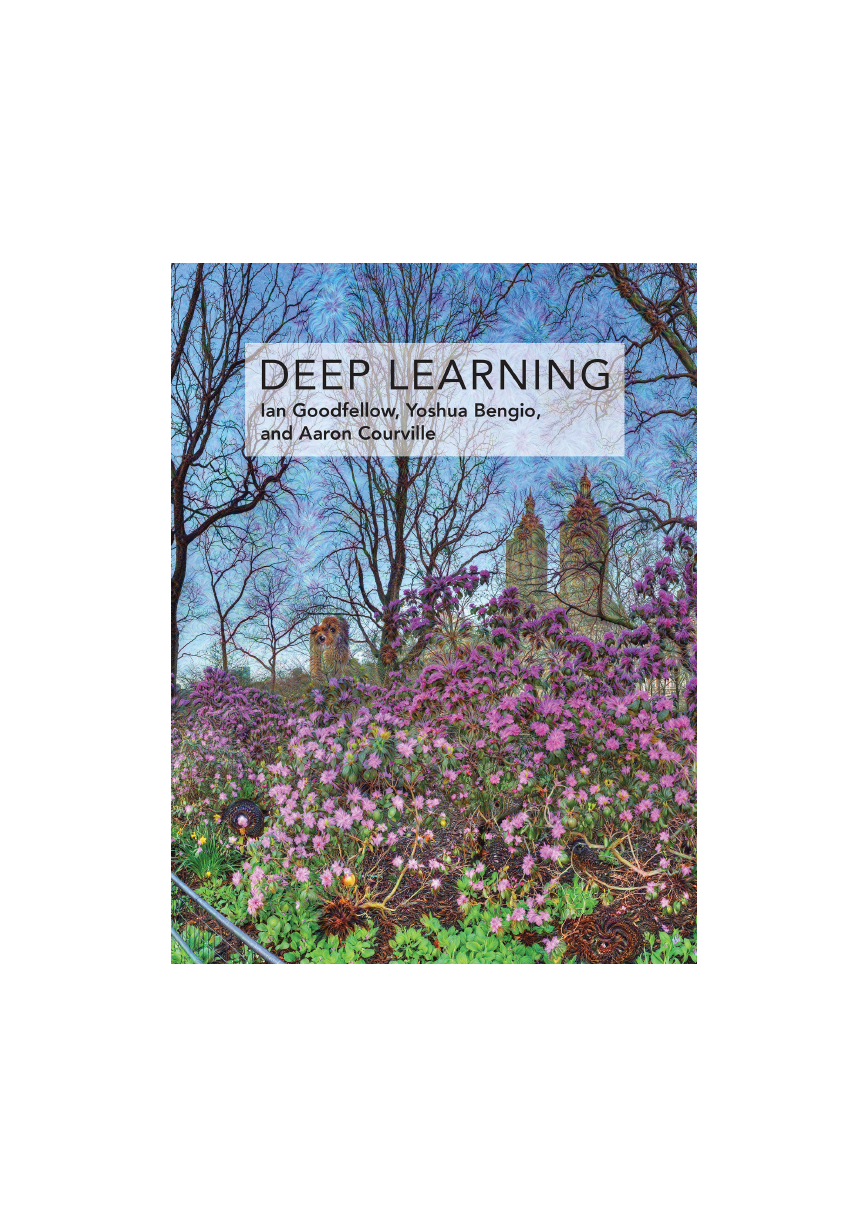
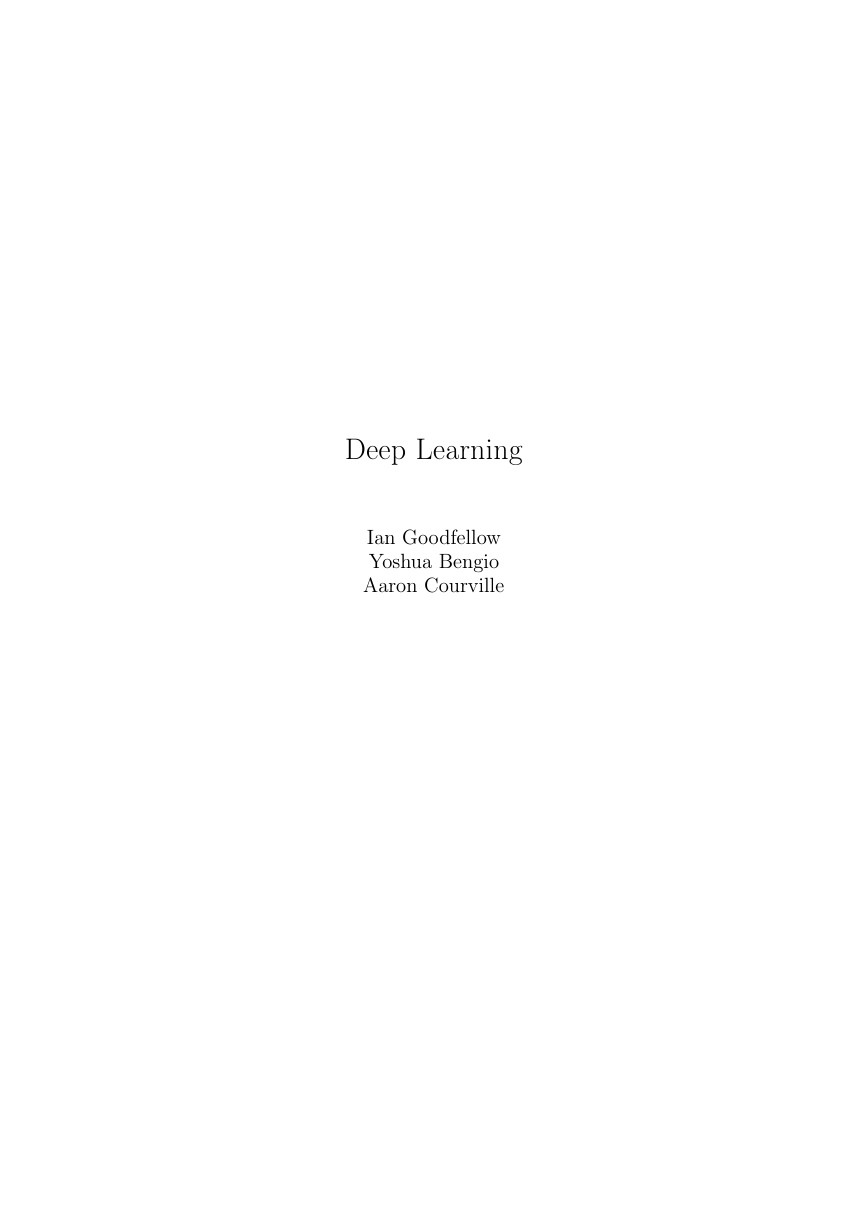
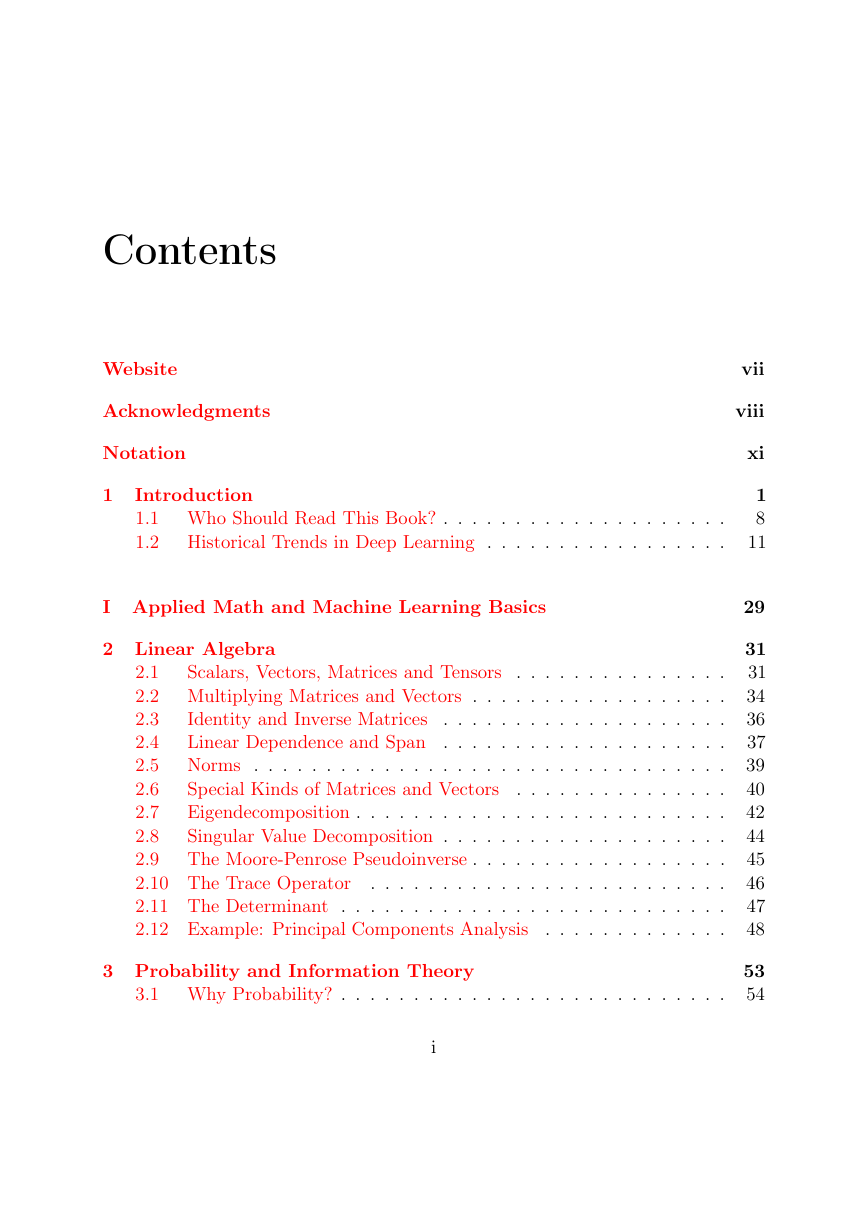
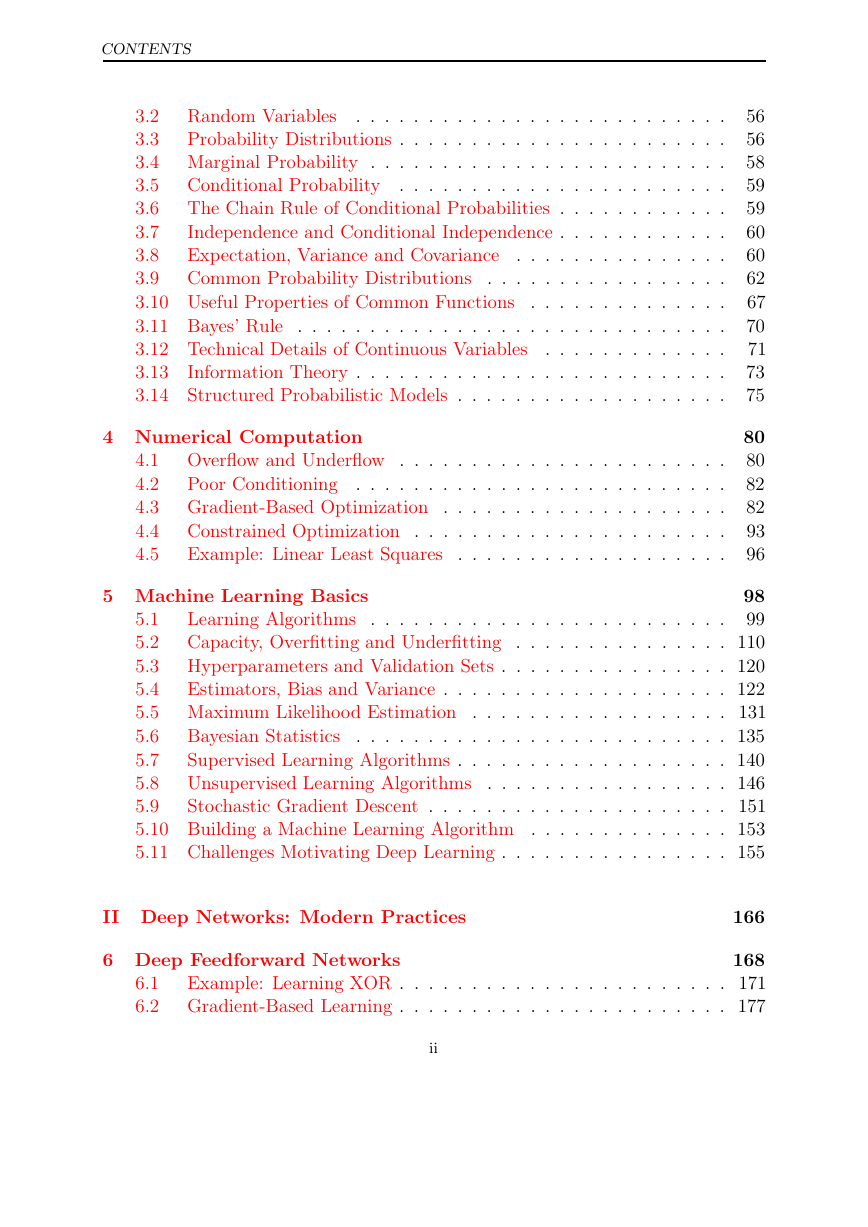
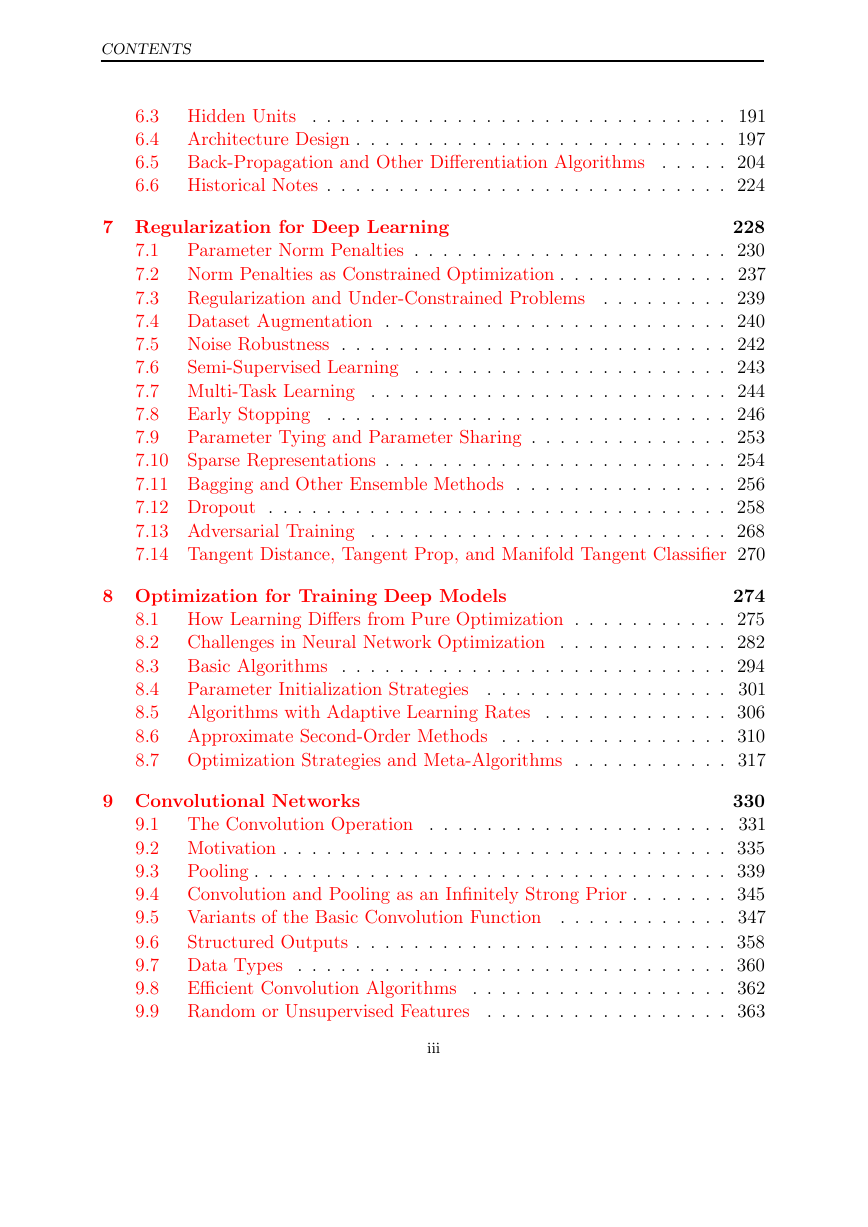
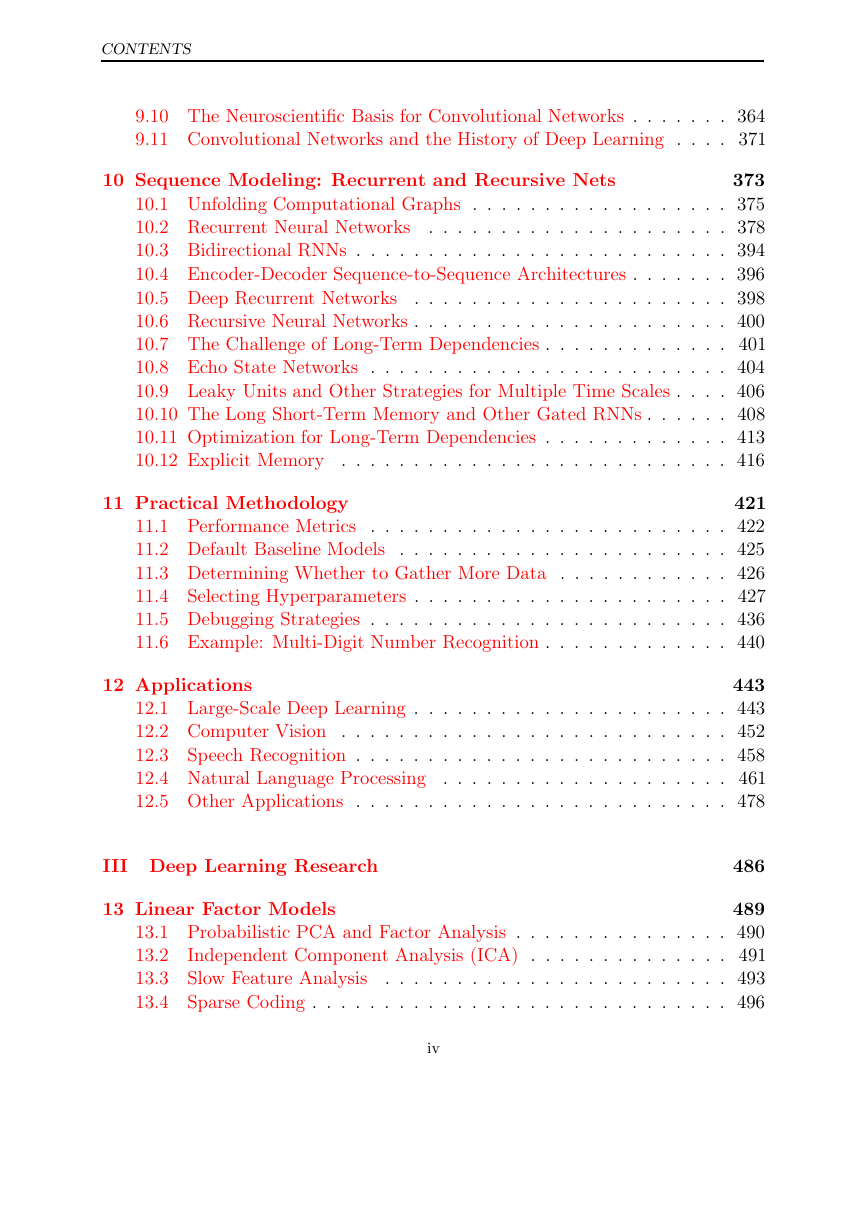
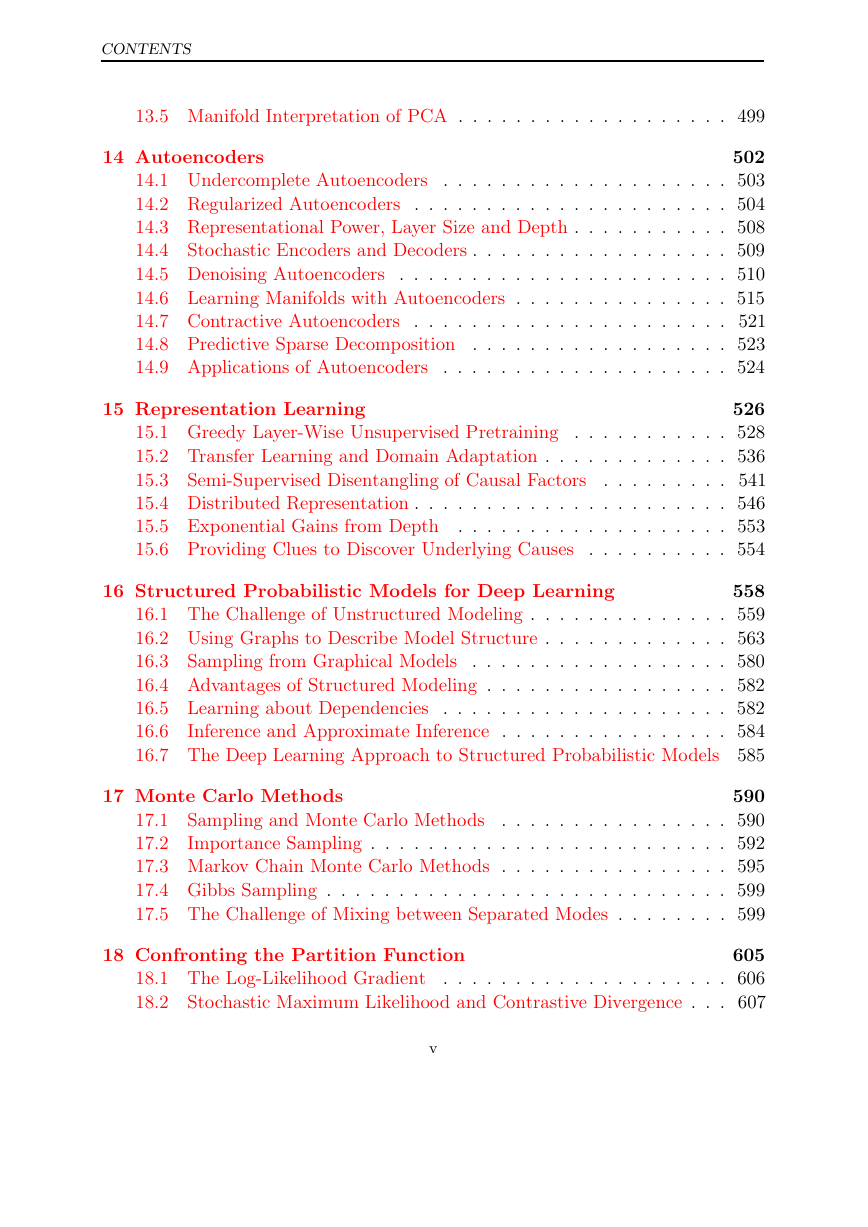
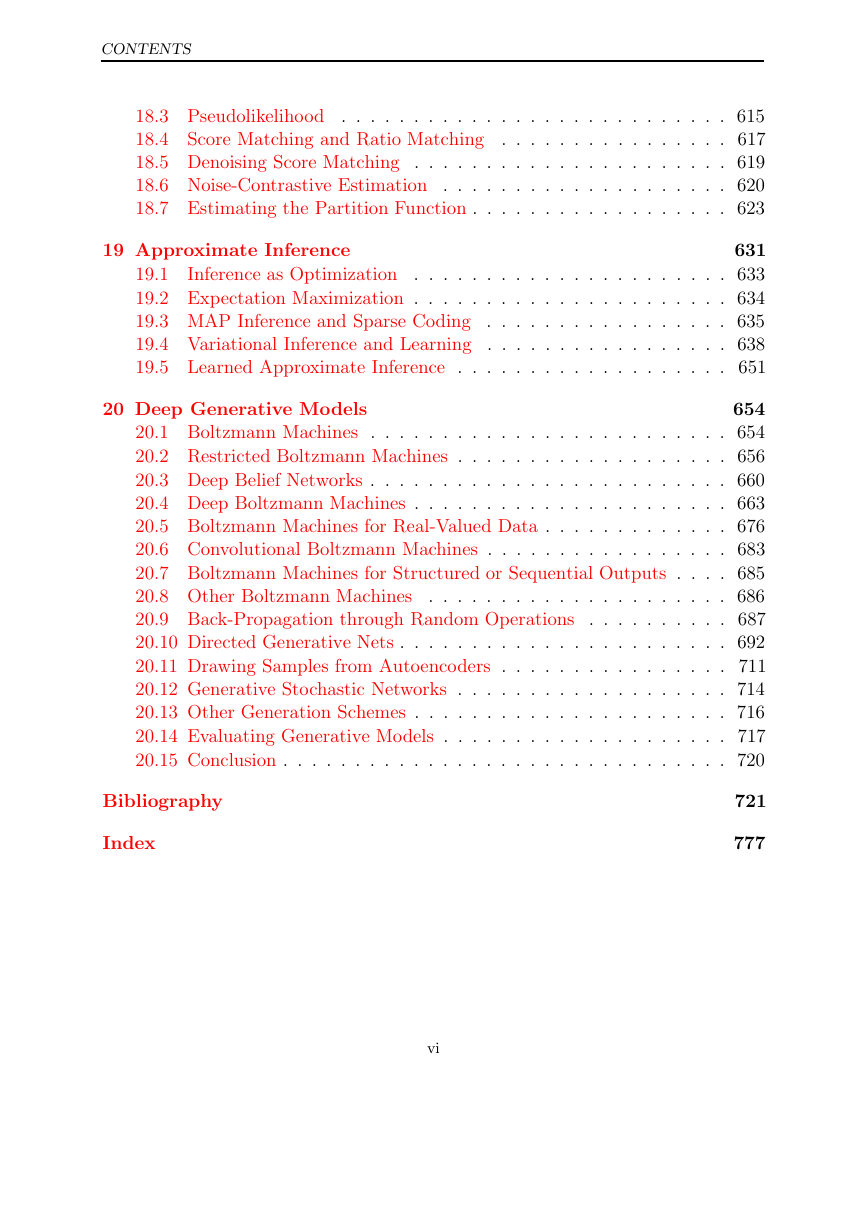








 2023年江西萍乡中考道德与法治真题及答案.doc
2023年江西萍乡中考道德与法治真题及答案.doc 2012年重庆南川中考生物真题及答案.doc
2012年重庆南川中考生物真题及答案.doc 2013年江西师范大学地理学综合及文艺理论基础考研真题.doc
2013年江西师范大学地理学综合及文艺理论基础考研真题.doc 2020年四川甘孜小升初语文真题及答案I卷.doc
2020年四川甘孜小升初语文真题及答案I卷.doc 2020年注册岩土工程师专业基础考试真题及答案.doc
2020年注册岩土工程师专业基础考试真题及答案.doc 2023-2024学年福建省厦门市九年级上学期数学月考试题及答案.doc
2023-2024学年福建省厦门市九年级上学期数学月考试题及答案.doc 2021-2022学年辽宁省沈阳市大东区九年级上学期语文期末试题及答案.doc
2021-2022学年辽宁省沈阳市大东区九年级上学期语文期末试题及答案.doc 2022-2023学年北京东城区初三第一学期物理期末试卷及答案.doc
2022-2023学年北京东城区初三第一学期物理期末试卷及答案.doc 2018上半年江西教师资格初中地理学科知识与教学能力真题及答案.doc
2018上半年江西教师资格初中地理学科知识与教学能力真题及答案.doc 2012年河北国家公务员申论考试真题及答案-省级.doc
2012年河北国家公务员申论考试真题及答案-省级.doc 2020-2021学年江苏省扬州市江都区邵樊片九年级上学期数学第一次质量检测试题及答案.doc
2020-2021学年江苏省扬州市江都区邵樊片九年级上学期数学第一次质量检测试题及答案.doc 2022下半年黑龙江教师资格证中学综合素质真题及答案.doc
2022下半年黑龙江教师资格证中学综合素质真题及答案.doc